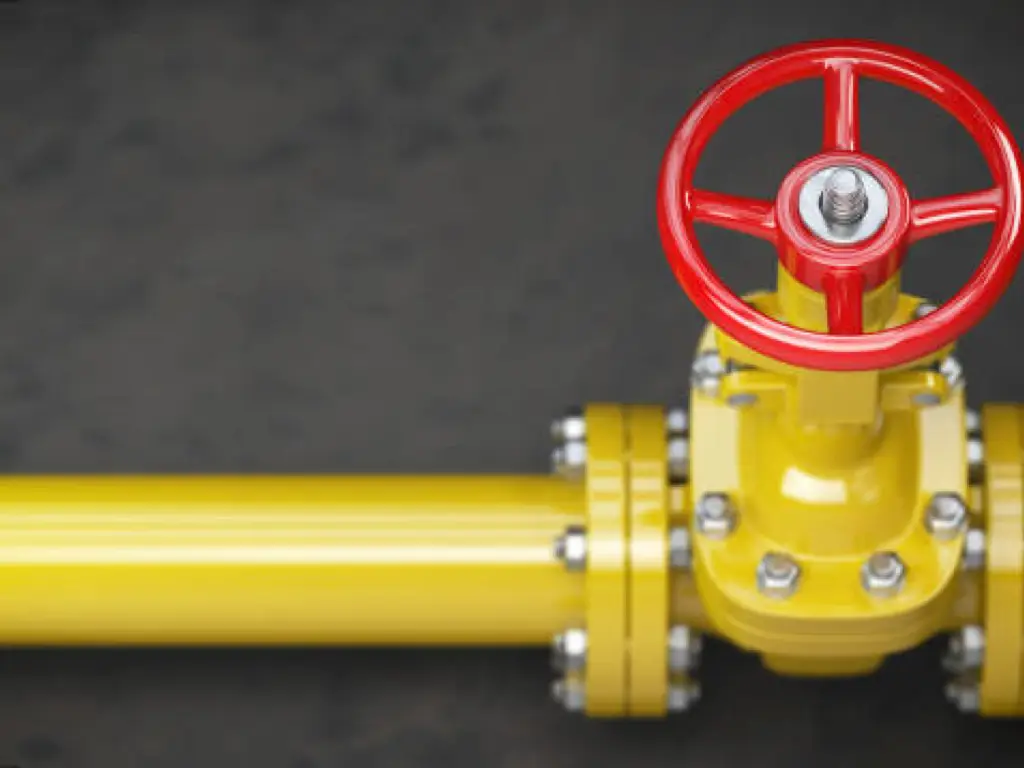Valves, in their varying shapes and sizes, hold massive industrial importance. From regulating the flow of liquids and gases to shutting off the supply completely, industrial valves play crucial roles in myriad contexts. But how does one precisely tell whether a water valve – be it a gate valve, ball valve, globe valve or butterfly valve – is open or closed? This is a question that may seem daunting.

| Valve Type | Open Status | Close Status |
| Gate Valve | Handle turns counter-clockwise; the stem is raised | Handle turns clockwise; stem is not raised |
| Ball Valve | Handle aligns with the pipeline direction | Handle is perpendicular to the pipeline direction |
| Butterfly Valve | Butterfly/disc and handle are parallel to the flow of liquid | Butterfly/disc and handle are perpendicular to the flow of liquid |
| Globe Valve | Handwheel is turned counter-clockwise; stem is raised | Handwheel is turned clockwise; stem is not raised |
| Check Valve | Fluid is flowing in the permissible direction | Fluid is not flowing or flowing in the opposite direction |
How to Know If the Gate Valve is Open or Closed?
A gate valve, the most common type of industrial valve, plays an essential role in various water supply systems, controlling the flow of water and other fluids. However, how to tell if a valve is open or closed can often pose challenges.
Determining the open or closed status of a gate valve involves two main methods: checking the flow direction and inspecting the valve’s control handle. If water or another fluid flows through the valve in the direction of flow, this implies that the gate valve is in its open position. Conversely, if there is no discernable flow, then the faucet or gate valve is in a closed position.

The observation of the control handle or lever also provides reliable evidence of whether the gate valve is open or closed. Gate valves usually come with a lever or handwheel to regulate their positions. When the handle aligns with the direction of the piping, the valve is open. Conversely, when the handle is perpendicular, the valve is closed position.
Modern technology also offers automated solutions to monitor and control gate valve statuses. For instance, pressure sensors can determine whether a valve is open or closed based on the pressure level. Position sensors can track the physical position of the valve, determining its operational state. This automation offers precise control and helps to efficiently manage water supply systems.
How to Open and Close a Gate Valve?
To open a gate valve, you typically need to turn the handwheel in an anti-clockwise direction. Keep rotating the handwheel until it cannot be turned any further, indicating the valve is now fully open. However, it’s important to add that over-spacing can potentially damage the valve. Therefore, after fully opening the valve, you should make a small (about quarter) clockwise turn.

Closing the valve, as you may have guessed, involves rotating the handwheel in a clockwise direction. When the handwheel cannot be turned further, the valve is considered fully closed. Examine your gate valve visually and physically to ensure you’re operating it correctly.
How to Know If the Ball Valve is Open or Closed?
A ball valve, characterized by its spherical disc that controls the flow path, can be analyzed by looking at the handle. As with the gate valve, the lever on the ball valve will be in line with the pipe if the valve is open, and perpendicular if it is in the closed position.

Visual checks alone can often determine the status of a ball valve. Unlike most types of valves, the handle on a ball valve is flat, making the “on” and “off” positions easier to distinguish. However, do note that some advanced ball valve types also come with automation for remote control, similar to gate valves.
How to Open and Close a Ball Valve?
To open a ball valve, ensure the handle position on the ball valve aligns with the valve’s body. To do this, twist the valve’s handle anti-clockwise. Continue until the handle stops; this signals the ball valve is fully open.To close the ball valve, turn the handle clockwise until the handle stops moving. The handle should now be perpendicular to the body of the valve, signifying a closed position.Bear in mind that, like gate valves, the spherical disc inside the ball valve controls the flow of water or other fluids. The predetermined alignment of the handle and the valve’s body serves as an indicator of its open or closed condition.
How to Know If the Butterfly Valve is Open or Closed?
Another mainstay in the roster of industrial and homeowners’ valve types is the butterfly valve. It gets its name from the disc inside the valve which resembles a butterfly’s wings. Knowing how to tell if a butterfly valve is open or closed is fairly simple. If the “butterfly” or disc inside the valve is parallel with the flow of water, the valve is open. If the disc is positioned perpendicularly, the valve is in a closed position.
These types of shut-off valves usually use a control lever for operation. Not only does the disc’s position indicate the state of the valve, but the handle does as well. If the lever handle is parallel to the piping, the butterfly valve is open; when the handle is perpendicular, the valve is closed.
How to Open and Close a Butterfly Valve?
To operate a butterfly valve, turn the handle or lever. To open the valve, rotate the handle so that it aligns with the direction of the pipeline. The butterfly or disc rotates within the valve body to allow flow (open position).To close the butterfly valve, turn the handle 90 degrees, so it’s perpendicular to the pipeline. Here, the disc is also moved to the perpendicular position, effectively blocking flow (closed position).

Butterfly valves are a popular choice in large diameter pipelines for their lightweight, quick operation, and cost-effectiveness. However, accurate control of the flow rate can be trickier with a butterfly valve, given that even a small rotation of the handle results in a considerable change in flow rate.
How to Know If the Globe Valve is Open or Closed?
Globe valves, specifically designed for precise flow control, vaguely indicate their state. As with most valves, an open globe valve has its handwheel turned counter-clockwise, allowing water supply to pass through. And by rotating the handwheel clockwise leads to a completely locked, or closed valve. However, the position of the wheel doesn’t always reflect an accurate picture of the valve’s status. To confirm, check the flow rate: an open valve leads to a steady water flow and a closed valve interrupts the flow.

How to Open and Close a Globe Valve?
Operating a globe valve may require a bit more effort than a gate or ball valve since the disc inside a globe valve has to be screwed inward/outward to close or open the valve, respectively.To open a globe valve, turn the handwheel anticlockwise, which unscrews the disc and allows the flow of water or liquid through it. Conversely, to close the globe valve, turn the handwheel clockwise, screwing the disc into the seat and restricting the flow of water.The globe valve design makes them excellent for regulating flow, unlike ball valves or gate valves which mainly act as shut-off valves. This unique aspect earns them a special place in various applications like cooling water systems, fuel oil systems, etc., where the controlling flow is necessary.
How to Know If the Check Valve is Open or Closed?
Check valves are designed to allow flow in one direction, preventing backflow. When fluid flows in the permissible direction, it pushes the valve disc (or ball) open. When the flow ceases or reverses, the disc or ball is pushed back into the seat, closing the valve. Therefore, the check valve’s status actually responds to the conditions inside the pipeline, differing from manually operated valves like gate or ball valves.
How to Open and Close a Check Valve?
Technically, you don’t manually open or close a check valve. The opening and closing of this type of valve are fluid-operated. The valve opens when the pressure from the flow of water or other media pushes the valve’s disc off the sealing device. If the flow reduces or reverses, the pressure decreases, and the valve closes due to the disc returning to the sealing device.

Check valves are quite essential for systems that require one-way flow, such as pump and compressor discharge lines, cooling towers, etc. By understanding how they operate, you can better analyze the status of these automatically controlled valves.
What Safety Precautions Should Be Considered When Inspecting a Valve?
Safety becomes paramount when dealing with valves, especially in industrial settings. Consequentially, understanding safety measures when inspecting a valve plays a crucial.
Before any inspection, ensure the system is depressurized and cooled down to the ambient or a safe temperature. Also, ensure that you wear personal protective equipment (PPE), including safety glasses, appropriate gloves, and protective footwear.
When dealing with valves under pressure, exercise caution. An open valve can abruptly release high-pressure gas or liquid that poses a hazard. Moreover, avoid over-tightening the valve, as it can damage the valve’s internal parts, leading to other complications.
Furthermore, isolation is important in keeping safe. When performing maintenance or repairs, the valve in work should be isolated to prevent sudden flow of fluid.
Lastly, understanding the mechanical operation of valves, their specifications, and system conditions is vital in maintaining a safe environment when handling valves.
Conclusion
In conclusion, understanding how to tell if a valve is open or closed and knowing how to operate various types of valves are essential skills. From gate valves, ball valves, butterfly valves to globe and check valves, each has unique functionalities and ways of operation. As an individual responsible for the operation of these valves, your priority should be to understand each valve’s operative principle and maintain them regularly for optimal functionality. Above all, the safety measures and precautions highlighted should never be overlooked when inspecting and operating valves. Doing so will ensure not only the lifespan of your valves but also the safety of individuals operating them.To discuss the use of valves with an expert, and to learn more about valves, please contact Dombor.









